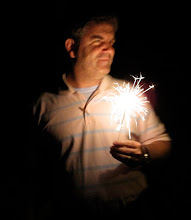Most recurring quality problems (and the most difficult to fix after installation) happen at locations where two materials meet -- what I have learned to call "Join-To Conditions". Look around the room you are in--You will see several examples:
- Where the wall meets the floor
- Where the ceiling meets the wall
- Where windows or doors meet the wall
- Corner conditions
- Carpet-to-tile or wood transitions
- Cabinet to wall
- Etc. . . .
It is very beneficial for any project to take time, before the design is completed, to review with the design and construction team the constructability of the project plans. As far as finish quality is concerned, solutions to Join-To Conditions can cause the biggest impact. Here is a summary of 4 of the most common I have seen over the years, with a few considerations for each.
- Exact Match - Easy to say, hard to do in real life. Materials move over time and what may start out as "flush" may become a "gap" or develop a "lip" later on. Exact Match is probably the most difficult Join-To Condition to make look really good, but it also may be the only available solution due to adjacent conditions. If Exact Match is the way you have to go, it is recommended to make sure the backing or substrate is solid. Since all materials are exposed, much more attention to surface finish, edge treatment and fasteners (or adhesives) will be required. Exterior applications for Exact Match are even more difficult to accomplish successfully, because of weather. Materials expand and contract at different rates, and when moisture is involved, freezing and thawing cause even more pronounced movement.
- Butt Joint - A Variation of the Exact Match of two different materials is a Butt Joint - typically two of the same materials, separated by a caulk joint. This Join-To solution has an advantage over the Exact Match, in that the caulk joint allows for some movement without affecting the appearance of workmanship problems. Some Butt Joints allow fort significant movement as part of the design. Major Butt Joint examples include prefabricated expansion joints (seen on highway bridges or large buildings). This solution does not try to conceal the joint, which makes the location, dimensions and configuration of the joint important to the overall design aesthetic.
- Reveal - A channel recess between two materials, often square in section. Reveals have the appearance of a clean line or band, as compared to the proportions of adjoining field material. Reveals typically provide a more modern, high-end appearance and tend to highlight the quality or impact of the field. Reveals are commonly used with thick materials, including wood, stone and built-up gypsum walls. Reveals can be made to allow a certain amount of movement without affecting the look or quality, and the "line" can be more easily maintained (than, for example, a painted field with a stripe). Properly designed and installed Reveals may cost more than other Join-To solutions, but they tend to provide a longer-lasting quality appearance.
- Trim Cover - The most common, successful Join-To solution is to cover the joint with "trim". Common examples of this are door and window casings, crown molding, flooring base and door thresholds, to name a few. The trim cover provides an additional design feature to be considered in the aesthetic scheme and installation solution. Trim conceals the rough or unfinished edges beneath, allowing for a more expeditious installation. Also rough fasteners are covered, and more flexible tolerances are allowed behind the trim. In general, the Trim Cover solution is more economical, and more often seen (especially in residential construction) than other "planned" Join-To solutions.
Identifying and solving Join-To Conditions will save countless hours in rework or "call-backs" down the road. Ultimately, the success or failure of the Join-To solutions on every project will have significant impact on the overall perception of quality.
On one hand, failing to address Join-To Conditions will cost money and cause disappointment, but addressing them early is one of the best ways to increase the Quality and Value of your project.
Hopefully this information is helpful in stimulating ideas to make your projects better, whether you are building a multimillion dollar commercial project, a piece of furniture for your home, or a tree fort in your back yard.
Answer to the Trivia question - what three different presidents later went on to be:
(1) Senator: Andrew Johnson
(2) Congressman: John Q Adams
(3) US Chief Justice: William H Taft
CHW gets lunch!

No comments:
Post a Comment